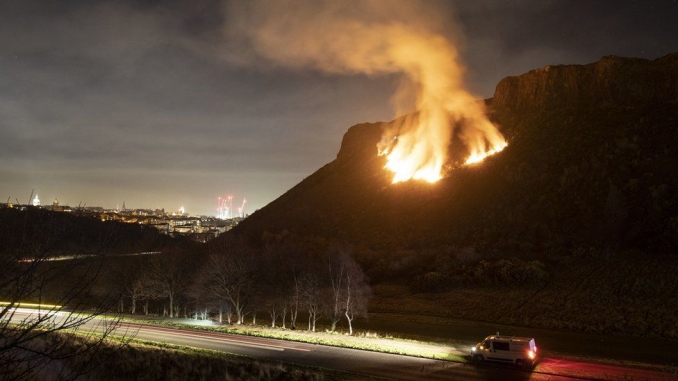Reminder of active volcano that once stood above Scotland's capital
The images of the fires burning on Arthur's Seat in the Scottish capital of Edinburgh (Scottish Gaelic: Dùn Èideann) give the strange illusion that this now extinct volcano has erupted again. In fact it is a large gorse fire. Gorse is a spiny evergreen shrub with yellow flowers that is common in many parts of Scotland. Dozens of firefighters have been battling through Tuesday night and Wednesday morning to bring the large gorse fire on Arthur's Seat under control. The fire blazed over about 800 square metres of gorse on the Salisbury Crags, which are a series of 151 ft (46-metre) cliffs at the top of a subsidiary spur of Arthur's Seat.
Arthur's Seat is the largest of the three parts of the Arthur's Seat Volcano site. The other two parts being Calton Hill and the Castle Rock (Creag a' Chaisteil) upon which Edinburgh Castle (Caisteal Dhùn Éideann) sits. The extinct volcano system dates back to the Carboniferous age and lava samples have been dated at 341 to 335 million years old. However, many of those observing the fires lighting up the sky above Edinburgh last night, were presented with the strange apocalyptic image of the volcano springing back to live. The blaze is now under control and there are were no reports of any injuries.






